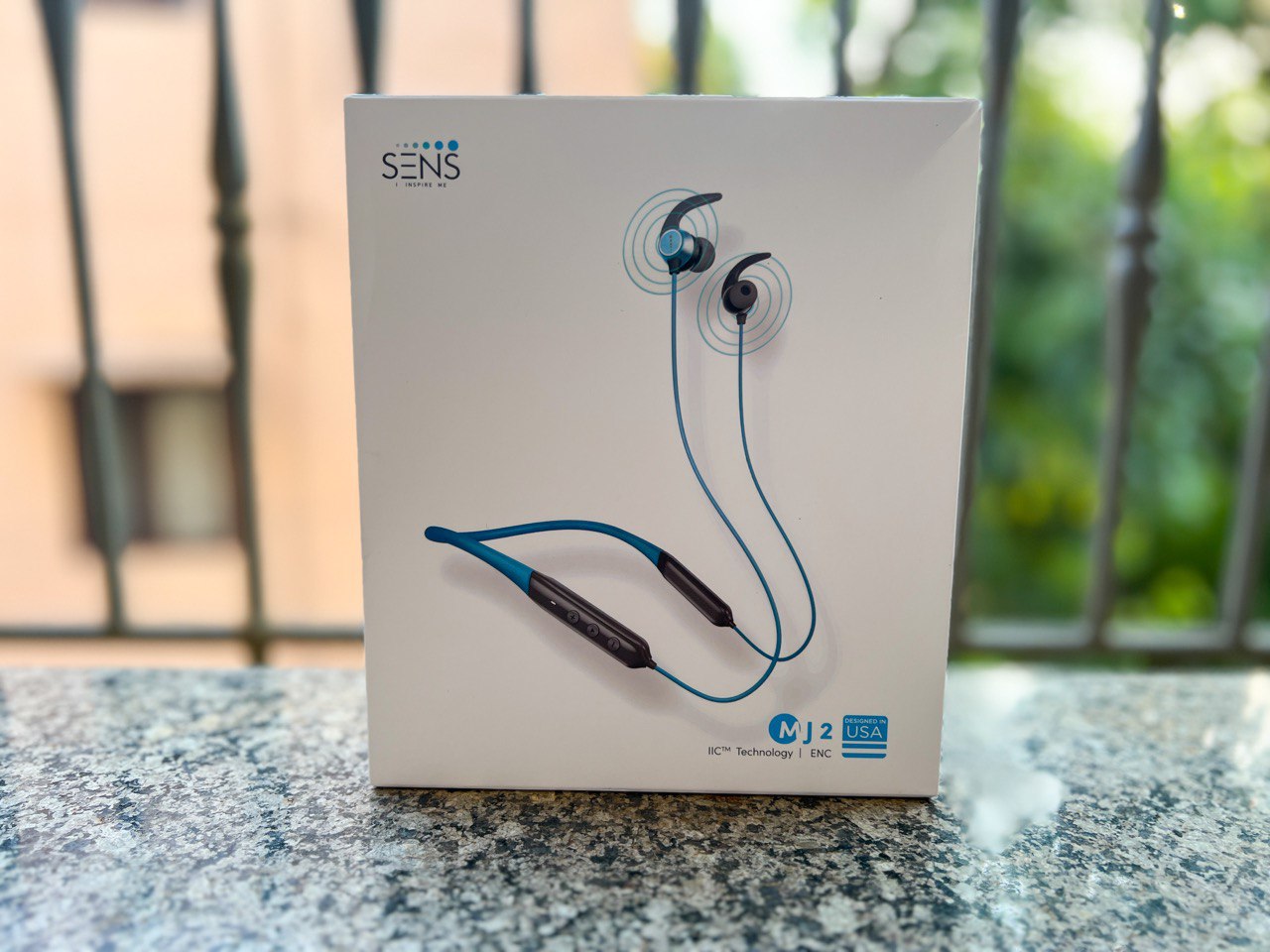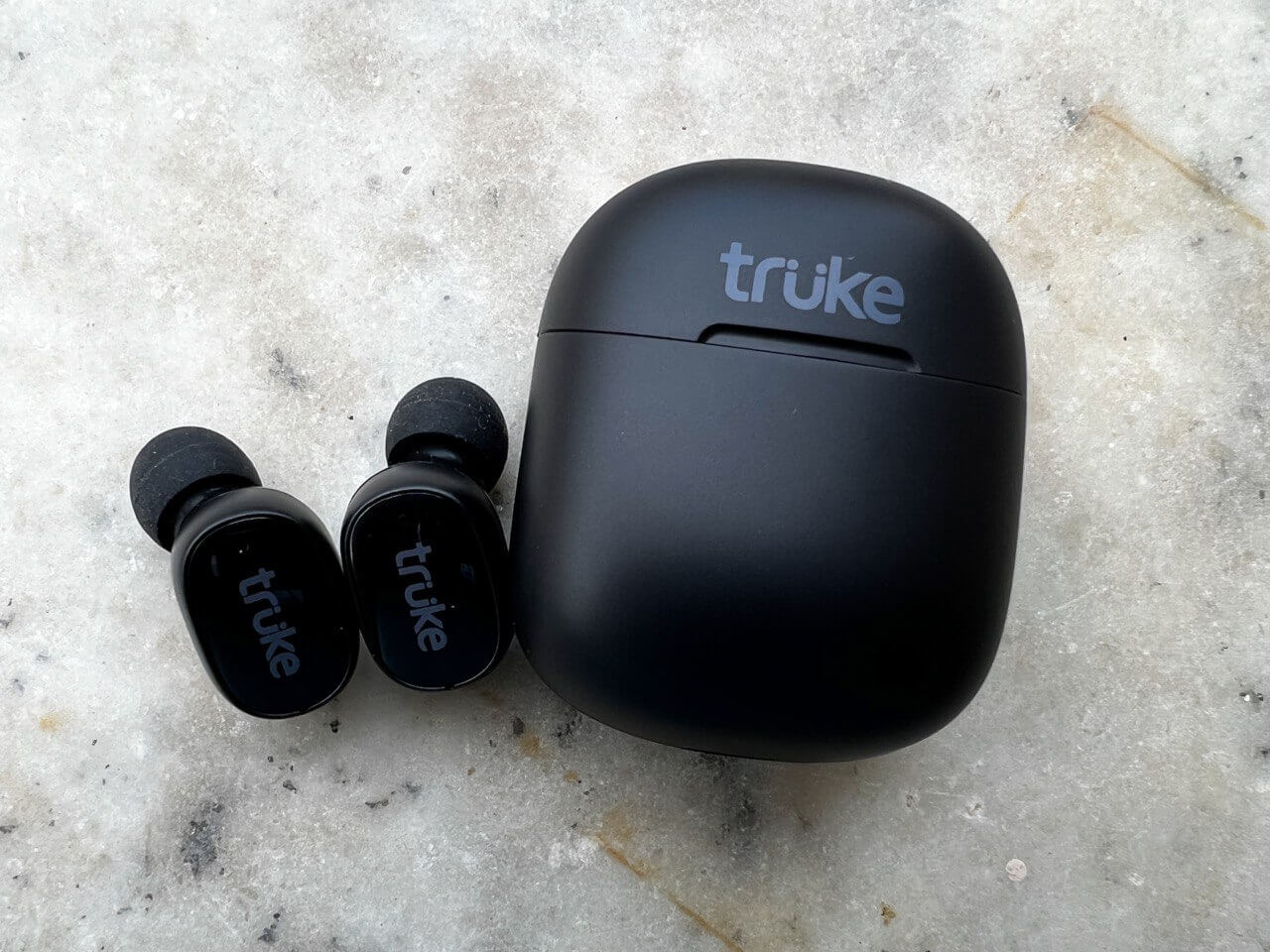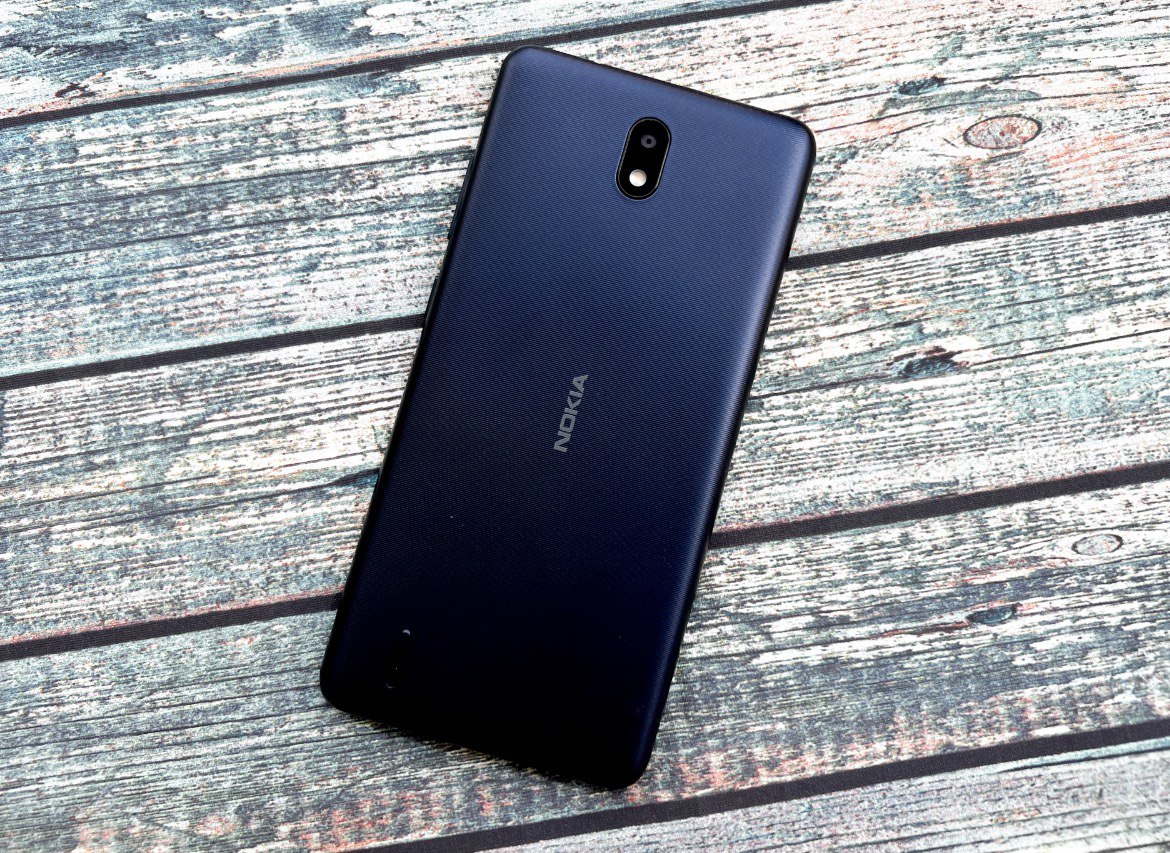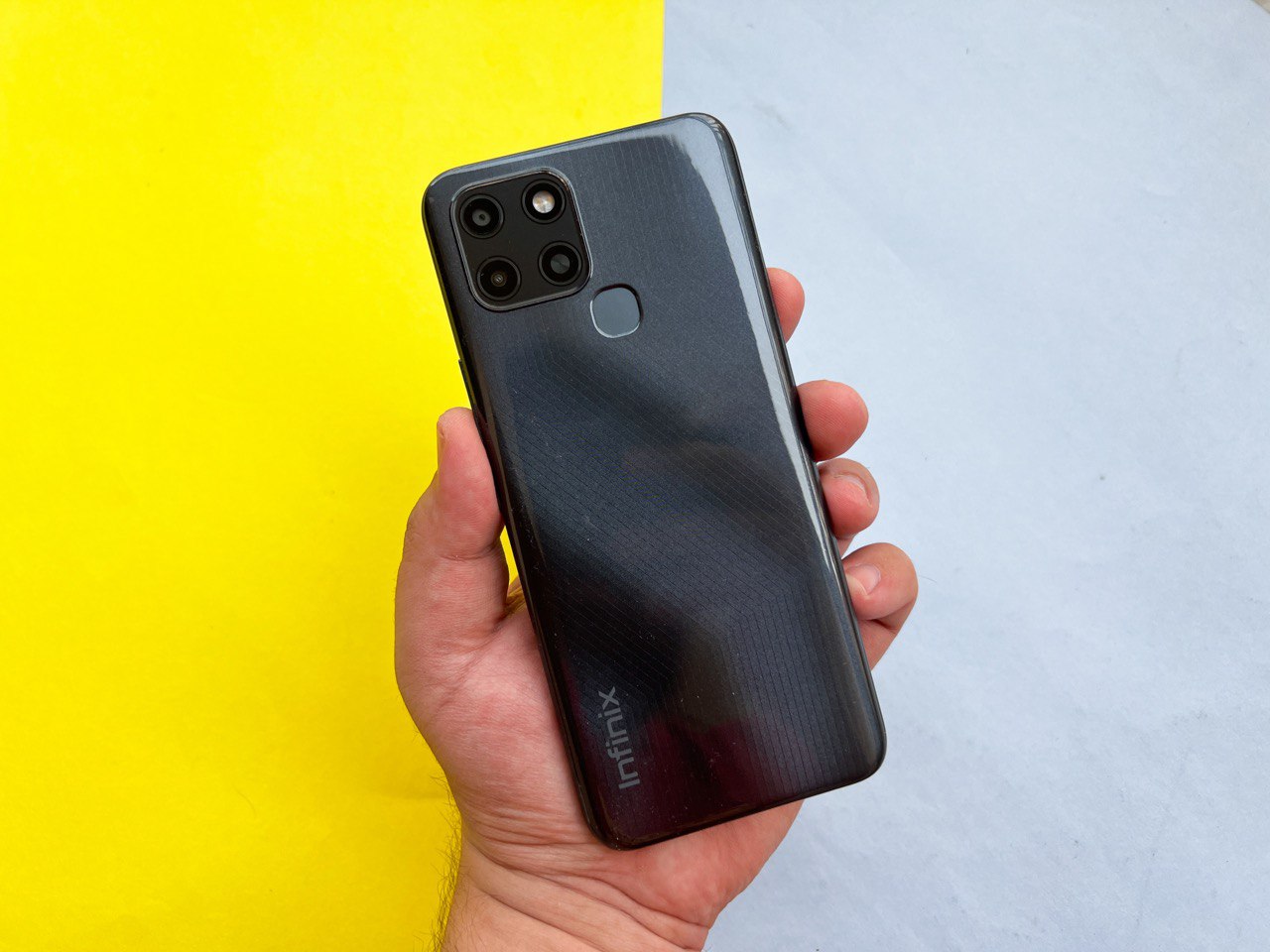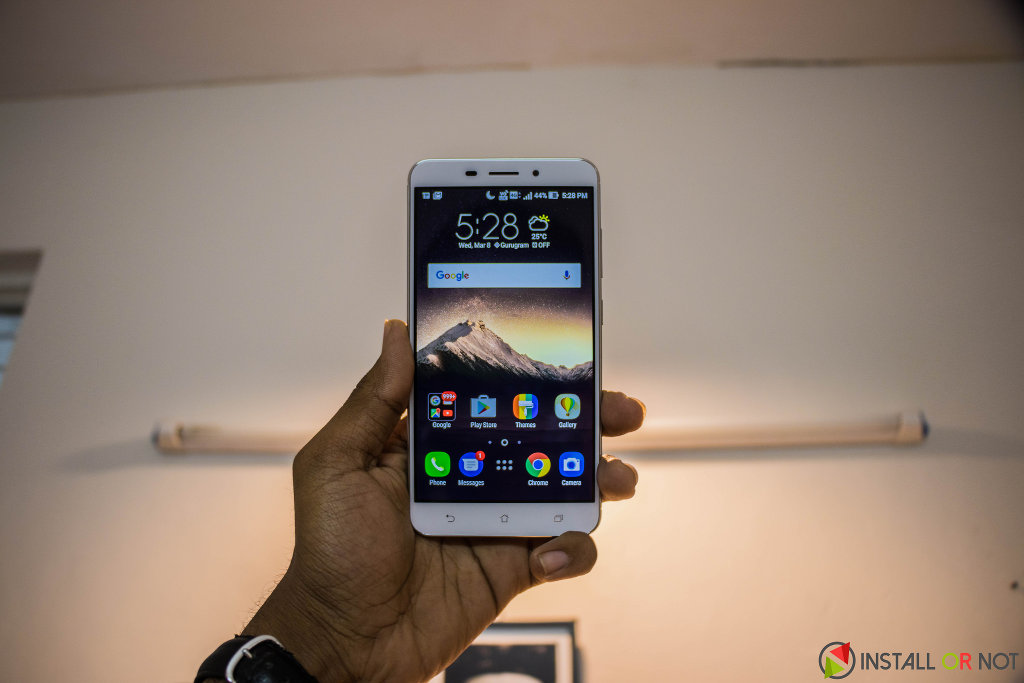 Asus for the past two years have been launching smartphones with the same name iterating the models. With the third generation of their Zenfone smartphone series this year, it had quite a few smartphones in the Zenfone 3 lineup. Asus Zenfone 3 Laser which was launched along with Zenfone 3 in November 2016 distinguishes from the other smartphones in the lineup by introducing a laser emitter for improving autofocus which in-turn adds on to a better camera experience. We know it’s quite late but here is our review of the Asus Zenfone 3 Laser.
Asus for the past two years have been launching smartphones with the same name iterating the models. With the third generation of their Zenfone smartphone series this year, it had quite a few smartphones in the Zenfone 3 lineup. Asus Zenfone 3 Laser which was launched along with Zenfone 3 in November 2016 distinguishes from the other smartphones in the lineup by introducing a laser emitter for improving autofocus which in-turn adds on to a better camera experience. We know it’s quite late but here is our review of the Asus Zenfone 3 Laser.
Design
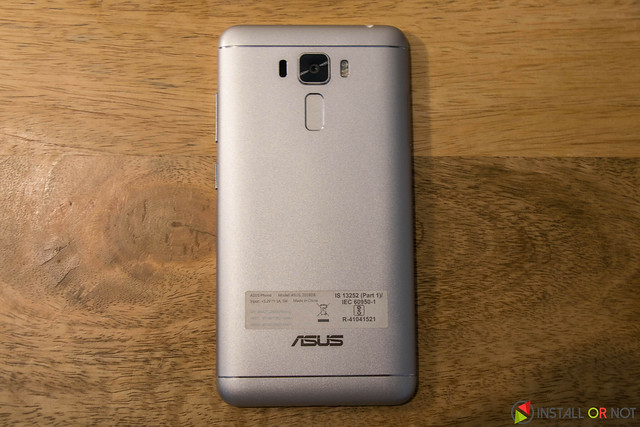
Unlike the last year’s Zenfone Laser, this year the Zenfone Laser features pleasant aesthetics. It is highly ergonomic and comes in a unibody design wrapped up in metal base on the back. On the front it has a 2.5D curved glass display with Corning Gorilla Glass protection. It has 5.5-inch full HD 1080p display with a 8MP secondary camera on the top.
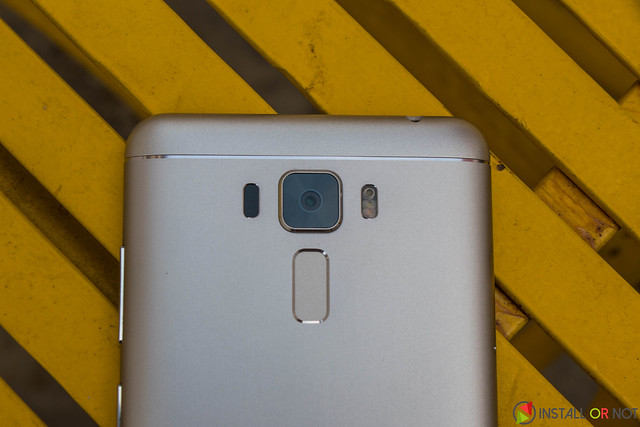
The rear has an oddly sized fingerprint sensor and a 13MP primary snapper along with Dual LED flash and a laser emitter for fast autofocus. The rear camera module though protrudes a little following the same design pattern as the Zenfone 3.
The rear bottom comes with the Asus branding and bottom edge comes with a speaker grill and a microUSB port. The top edge has the audio output headphone jack whereas left and right edges house power button and volume rocker.
Overall if you ask me honestly it feels like an upgrade on the design front comparing with the previous model.
Asus Zenfone 3 Laser Specifications
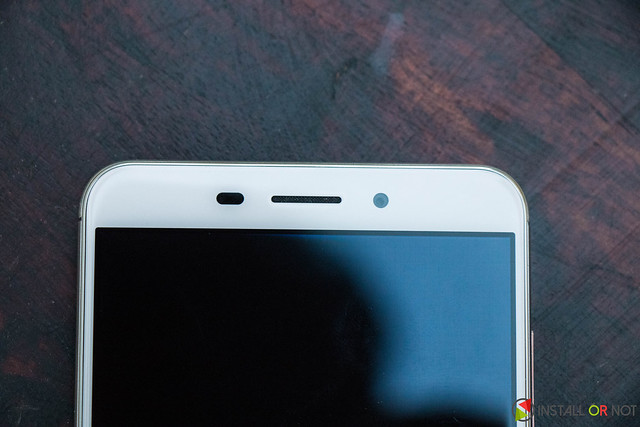
Asus Zenfone 3 Laser comes doesn’t aim for the budget market but it comes with specifications which are being offered even by budget smartphones. Its specifications are listed below.
- 5.5-inch 1080p 2.5D curved Corning Gorilla Glass 3 display
- Octa-Core Qualcomm Snapdragon 430 64-bit processor with Adreno 505 GPU
- 4GB RAM, 32GB internal storage, expandable memory up to 128GB with microSD
- Hybrid Dual SIM (nano + nano/microSD)
- Android 6.0 Marshmallow with Zen UI 2.0
- 13MP rear camera with dual-tone LED flash, f/2.0 aperture, Sony IMX214 sensor, Laser AF, 3-axis EIS
- 8MP front-facing camera, f/2.0 aperture
- Fingerprint sensor
- 149 x 76 x 7.9 mm in dimensions and 150g in weight
- 4G VoLTE, WiFi 802.11 b/g/n, Bluetooth 4.2, GPS enabled
- 3000mAh battery
Performance
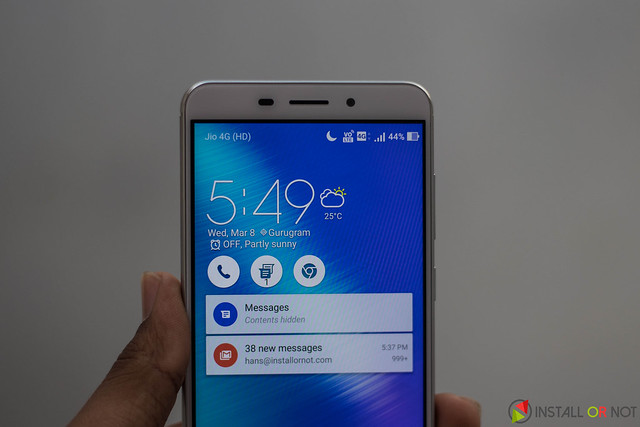
The 5.5-inch display on Asus Zenfone 3 Laser is quite vibrant. It has good brightness level with a solid color reproduction. It do come with the capability to change color temperature which is quite beneficial in the dark. In collaboration with Google, Asus is also offering up to 100GB of cloud storage on the Google Drive for two years.
Asus over the years definitely have improved the ZenUI but we still find a scope of improvement. The problem with people like us is that we judge any custom UI against stock Android developed by Google. The ease of accessibility and its convention is now a standard. Any changes to that raises questions and if the change requires too much effort it is straight forward rejected. Ultimate aim of the custom skins is to offer better user experience which totally depends upon one’s perspective.
Talking unbiased, the new ZenUI do remove some of the clutter with less third-party app partnerships and less of their own bundled apps that more can be done.
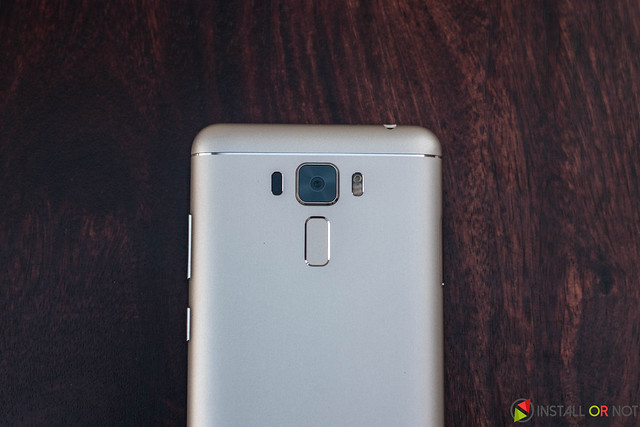
Camera on the Zenfone 3 Laser is what Asus is gaming for. Zenfone Laser lineup is meant for the shutter bugs who want to have a fast autofocus with a great customizable camera experience. It features a Manual, HDR Pro, Beautification, Super Resolution, Low-light, QR Code, Night, Depth of field, Effect, Selfie, GIF animation, Panorama, Miniature, Time rewind, Slow motion, or Time Lapse.
The camera app on ZenUI continues to offer the same across all its smartphones no matter which camera module the smartphone is using. The camera on the Zenfone 3 Laser offers a really fast autofocus lock and the results were pretty well too. The pictures captured with the Zenfone 3 Laser had good amount of detail and decent color reproduction. The EIS (Electronic Image Stabilization) feature do come handy while recording videos up to 1080p.
Asus Zenfone 3 Laser doesn’t support fast charging but 3000mAh battery surprisingly runs for most of the day even with high usage. The smartphone doesn’t heat up for most of the tasks even when we tried to multitask. Gaming, shooting videos and charging might have an impact on the core temperature though that is quite understandable.
Conclusion
Asus Zenfone 3 Laser packs a bunch with good looks and features. ZenUI is too improving which is a good sign for future releases to come. Camera as discussed above produces impressive results but the whole thing comes to vain when we compare it with the other similar priced smartphones in the same segment.
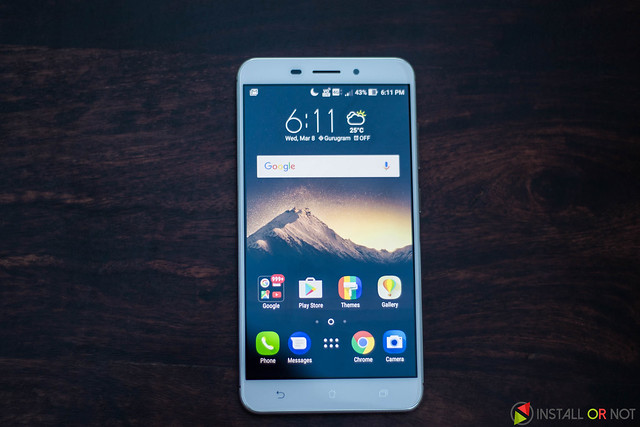
Being in the 20k price bracket, it is quite tough for people to consider Asus as their choice. With the same processor as the Xiaomi Redmi 3S Prime which is available for ₹8,999 a smartphone priced at double its price surely raises eyebrows. We believe the performance of the device is better than 3S Prime but the fact that it might not offer that value for money might drop it in the secondary list. Considering its offerings, we believe this smartphone could have been priced around ₹15,000. As of now it is available for ₹16,999 on Flipkart.
Pros:
- Design
- Display
- Camera
Cons:
- Price
- ZenUI
[easyreview title=”Install or Not Scorecard” cat1title=”Hardware” cat1detail=”” cat1rating=”3.0″ cat2title=”Performance” cat2detail=”” cat2rating=”3.0″ cat3title=”Design” cat3detail=”” cat3rating=”4.0″ cat4title=”Value for Money” cat4detail=”” cat4rating=”3.0″]

